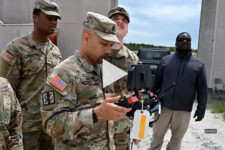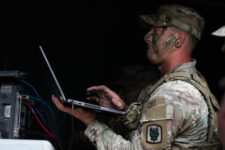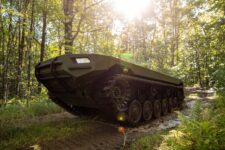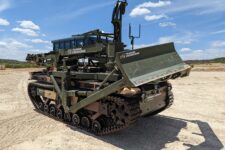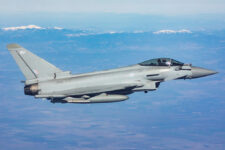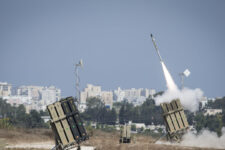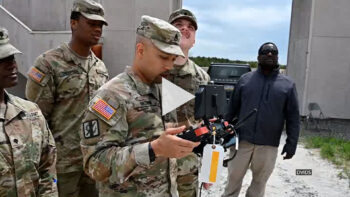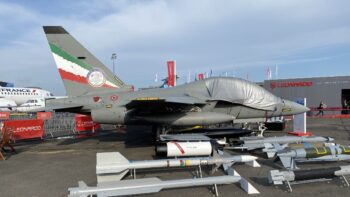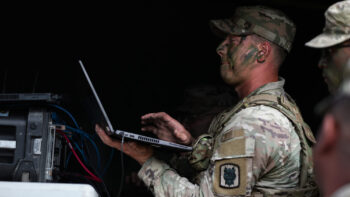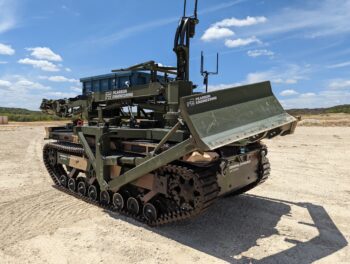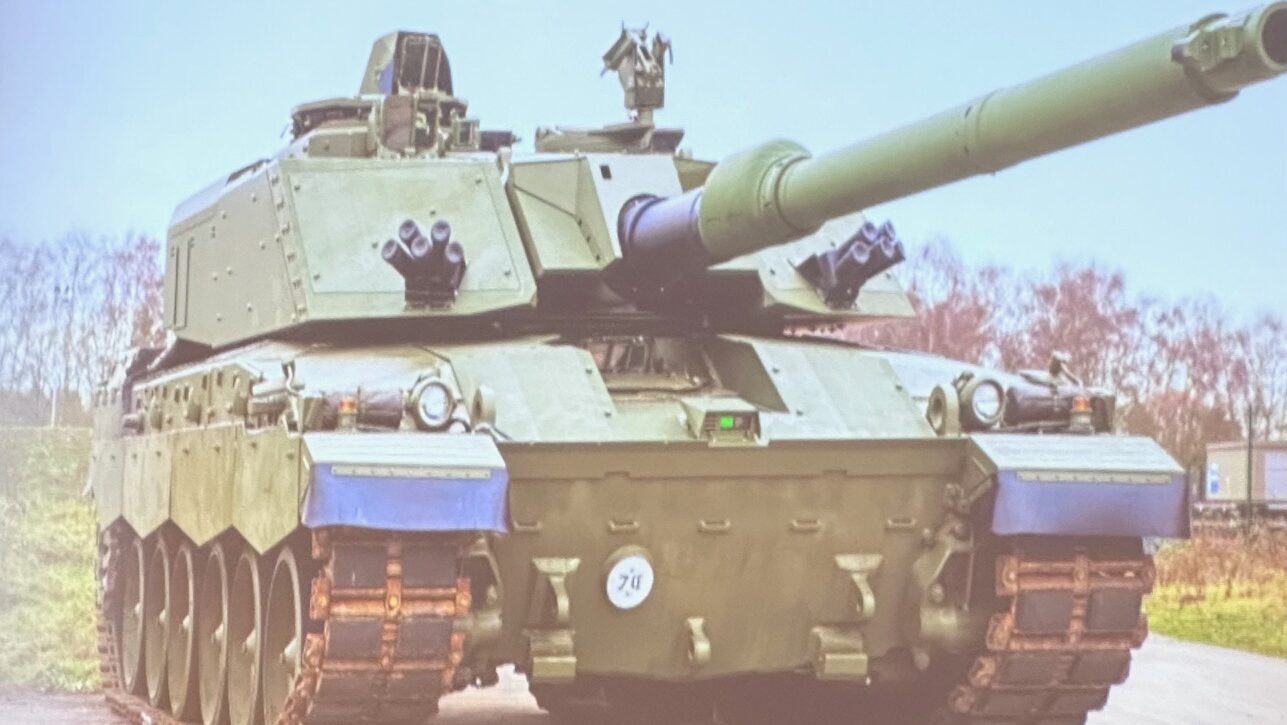
Images of the British Army’s first Challenger 3 main battle tank prototype were released for the first time by RBSL today. (RBSL)
IAV 2024 — The German-UK joint venture Rheinmetall BAE Systems Land (RBSL) has shared imagery of a first British Army Challenger 3 Main Battle Tank (MBT) prototype, after completing the build of the new vehicle at its Telford, England, production facility.
The first public images of the prototype were released today at the IQPC International Armoured Vehicles conference in London, with the vehicle expected to begin trials shortly. A total of 18 months of trials, split between sites in the UK and Germany, are planned before a systems qualification review next year. Eight prototypes are due to be developed.
“The Challenger 3 program will deliver the best tank in NATO … and deliver a network enabled, digital main battle tank, providing the soldier with a step-changing capability, ensuring a 21st century deterrence through to the out of service date [slated for 2040],” said Rory Breen, strategy and future business director at RBSL. “The first prototype … will begin trials in the coming weeks.”
The main purpose of the trial, set to be uncrewed, is to “allow us to confirm the system is safe for [subsequent] crew trials,” added Breen.
RELATED: Ukraine war leaves British Army ‘very uncomfortable’ with Future Soldier capabilities
He also detailed the engineering activities undertaken to upgrade the prototype from a Challenger 2 vehicle, the British Army’s in-service main battle tank, to the new Challenger 3 standard.
“What we do for a prototype is take a bare chassis and trade about 50 percent of the LRU’s (Line Replaceable Units) … and everything else, except the turret ring, is brand new,” said Breen.
New items integrated on the prototype and set for integration on 148 serial production tanks, as part of the wider £800 million ($1 billion) Challenger 3 program, include Rheinmetall’s 120mm smoothbore gun, a digitized turret, sights for day and night targeting, Rafael’s Trophy active protection system and a modular armor system.
Mobility enhancements also include the introduction of a third generation hydro gas suspension system and a more powerful engine.
Development of Challenger 3 “showcases advancements in the iron triangle of protection, firepower and mobility,” said Breen.
He said that RBSL could manufacture new vehicles from scratch, if requested by the UK Ministry of Defence. As plans stand, the company is only under contract to upgrade Challenger 2 vehicles.
The serviceability and operational readiness of the British Army’s Challenger 2 fleet has proven contentious in UK political circles and more relevant than ever in the wake of the UK’s commitment of main battle tanks to Ukraine in 2023.
As Breaking Defense previously reported, Lt. Gen. Robert McGowan, UK Chief of Defence Staff for Financial and Military Capability, denied that the decision by London to donate 14 of the older vehicles to Kyiv had reduced the British Army’s main battle tank “operational assets” by nearly a third. He told lawmakers in February 2023, the actual percentage was “not that high” but refused to discuss serviceability issues.
The British Army said at that time the tanks “being fed into the [Challenger] upgrade process are being actively used” by the service.
Despite lawmaker concern with Challenger 2 tanks, a number of recent milestones suggest development of Challenger 3 is faring better.
The final design of the vehicle was approved upon completion of the Critical Design Review (CDR) phase in February 2023, while Breen noted proof of performance trials, CDR of new anti-tank ammunition and testing and verification trails of the Trophy active protection system have all gone ahead successfully.
Challenger 3 Initial Operating Capability is targeted for 2027.
The Weekly Break Out Ep. 9: Industry conference concerns and drone red tape
Editors Aaron Mehta and Lee Ferran walk through the news from the AFA Warfare Symposium, and look forward to this week’s events.
